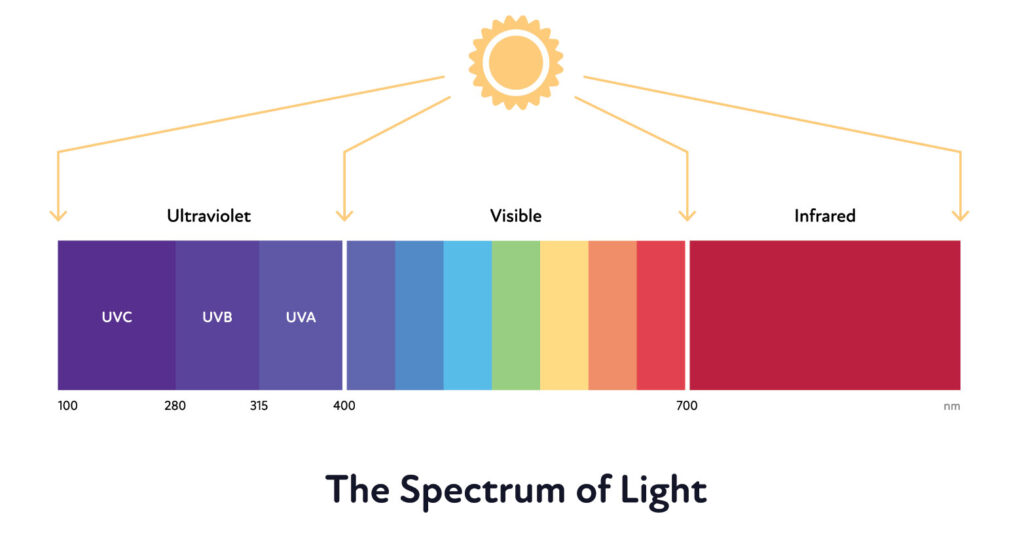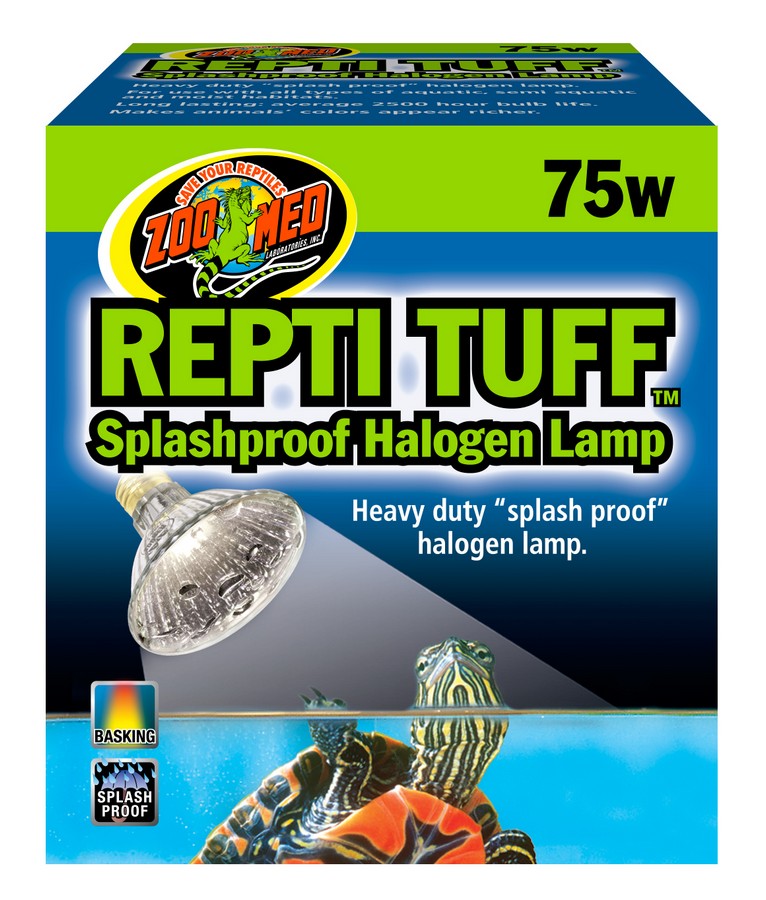What is UVA?
UVA is part of the sun’s natural spectrum that sits right between Visible Light and UVB.
While people cannot see UVA, most reptiles are equipped with a fourth cone in the retina that allows them to sense this portion of light. UVA is essentially another color that these animals can see that has reactions with the environment, providing important visual cues pertaining to food and other animals – specifically other animals of the same species.
These cues help reptiles make decisions about eating and breeding, so it is a very important part of the spectrum for them. Without exposure to UVA lighting, reptiles are essentially colorblind and may react poorly when presented with food and/or mates. A habitat that provides this component will likely increase feeding responses, reproductive behaviors, and general well-being of pet reptiles. UVA also plays a role in controlling the production of vitamin D3 and immune system response.
How can you provide UVA to pet Reptiles?
Natural sunlight is one way to provide UVA, so animals that are housed outdoors will have all they need. However, many species cannot be kept outdoors, and many places are not suitable for keeping pet reptiles in outdoor habitats. For pets that are housed inside, there are many different options for providing UVA. First of all, any UVB source (Reptisun & Powersun) will also provide UVA, but there are a few other lamps that can provide additional supplemental UVA: Basking Spot Lamp, Daylight Blue, ReptiTuff Splashproof Halogen lamp, and Ultra Sun® lamp.
How long should UVA be left on an animal?
In nature, reptiles would be exposed to UVA whenever the sun is up, so our pets’ habitats should mimic that cycle. UVA, UVB, and visible light should all be provided during the same 10 – 14 hours per day (during day time). This is called a Photoperiod (See below to learn more about Photoperiods). There is no need to try to provide UVA at night or any time that day lights are off.
What is a Photoperiod?
A Photoperiod is the amount of time each day that a plant or animal is exposed to light. In nature, the sun provides a natural photoperiod each day. This time is different in different parts of the world and different times of the year.
Why is it Important?
There is a lot of information that reptiles can get from the light around them, such as the time of day (morning, afternoon, dusk…) and time of year (season). With this information, animals can decide when it is time to hunt, eat, bask, breed, nest, hibernate (brumate) and more. These daily and yearly rhythms are an essential part of a reptile’s life. Even nocturnal species are able to monitor these lighting cycles and adjust their activities accordingly. Adjusting the daytime period can help bring about behavioral changes and may be necessary to induce breeding and other behaviors. In nature, animals are subject to varying daytime periods throughout the year. To best simulate natural conditions, create a shorter daytime period in the winter and a longer daytime period in the summer.
How to provide a Photoperiod
Providing a Photoperiod or Daylight cycle is a very important component of reptile keeping, and can easily be done by turning daylight terrarium lamps on and off. Many different timers are available to help automate terrarium lights and provide a regular photoperiod for your pets.
Facts to Remember:
- UVA is part of the sun’s natural spectrum that reptiles and amphibians can see.
- UVA aids these animals in mate selection, hormone production, species recognition, and food recognition.
- Without UVA, reptiles and amphibians are essentially colorblind.
- Proper exposure to UVA can encourage natural feeding and breeding responses while promoting well-being and health.
References and Resources
Bagnall, S. 2011 Apr. Rethinking Reptile Lighting. Reptiles: 20-31.
Ferguson GW, Brinker AM, Gehrmann WH, Bucklin SE, Baines FM, Mackin SJ.
2010. Voluntary exposure of some Western-Hemisphere snake and lizard species
to ultraviolet-B radiation in the field: How much ultraviolet-B should a lizard or
snake receive in captivity? Zoo Biol 29:317-334
Ultraviolet exposure and vitamin D synthesis in a sun-dwelling and a shade-dwelling species of Anolis: are there adaptations for lower ultraviolet B and dietary vitamin D3 availability in the shade?
Ferguson GW, Gehrmann WH, Karsten KB, Landwer AJ, Carman EN, Chen TC, Holick MF.
Physiol Biochem Zool. 2005 Mar-Apr;78(2):193-200. doi: 10.1086/427055. Epub 2005 Feb 25.
Monthly Average UV Index. www2.epa.gov/sunwise/monthly-average-uv-index
Accessed 2013 Oct 16.
What is the UV Index? www.who.int/uv/intersunprogramme/activities/uv_index-/en/index.html Accessed 2013 Oct 16.






